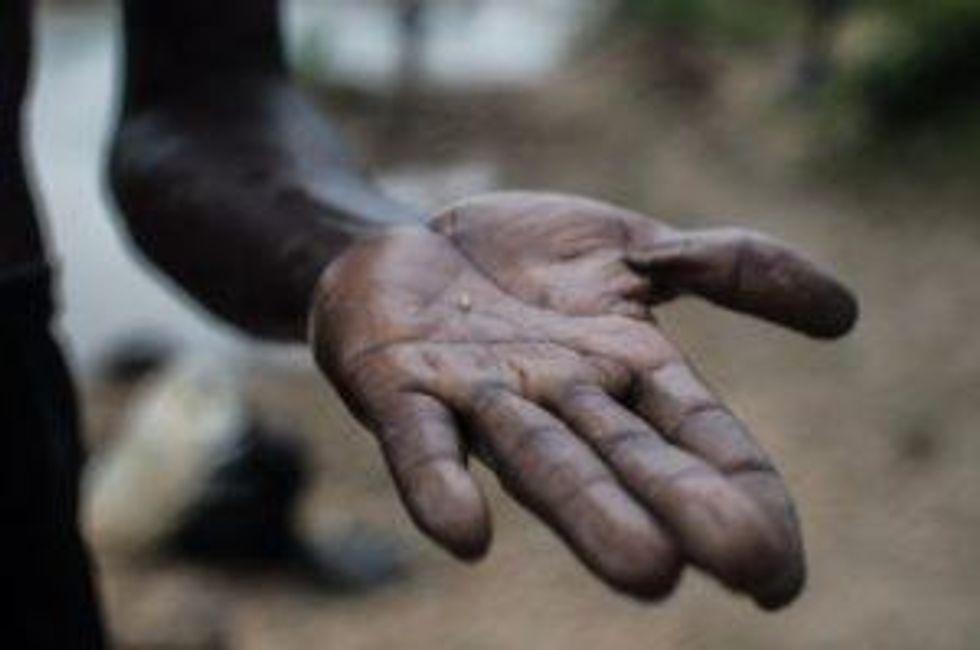Surviving in Sierra Leone: Artisanal Diamond Miners
In the African country there are 120,000 diggers, as the high unemployment rates leave mining as the option to survive.
Artisanal miners, people who dig for diamonds using rudimentary equipment, produce up to 20 percent of the world’s gem-quality diamonds. In Sierra Leone there are 120,000 diggers but between Africa and South America that number jumps to 1.5 million.
Many artisanal miners in the African country will admit that they have not found a diamond in months and are desperately poor. But in a country where there is 70 percent youth unemployment, mining is the option to survive.
The US Geological Survey explains that the small-scale alluvial mining that’s undertaken by individual laborers “involves digging and sifting through mud, sand and gravel using shovels sieves, or even bare hands.”
However, these operations are not very productive, lack safety and tend to have a high environmental impact. They are also often “outside the legal and regulatory framework.”
Philo, an artisanal miner from Kono District, told BBC: “This work is tough and physically straining – if I had the qualifications or opportunity to do another job then I would at once.”
In Koidu, the selling rate is $3,200 for a carat that is 40 percent pure, and much less for gems of lower purity. On a good day, Philo makes only $35.

Blood Diamonds Still Around
For many years, rebel groups in Sierra Leone, that suffered a 11-year-long civil war, took control of alluvial mining areas, stream bed deposits, in the north of the country. This allowed them to finance their brutal wars by selling the stones to international buyers.
The brutal conflict in Sierra Leone in the 1990s brought conflict diamonds to the world’s attention. As a result, in 2000 human rights advocates established the Kimberley Process, where dozens of countries agreed to certify diamonds to ensure they were “conflict free,” and prevent such stones from entering the pool of legitimate diamonds.
Today, 99 percent of the world’s diamond supply comes from stable countries. However, experts warn that in a handful countries torn by civil conflict like Sierra Leone, the illicit minerals trade is alive and well.
Alice Harle, an expert on minerals from the nonprofit organization Global Witness, that left the KP in 2011 because it was ”stuck in time”, told CNBC that the “conflict diamond problem has not gone away. … Companies sourcing diamonds originating in countries like Central African Republic and Zimbabwe may risk indirectly supporting violence,” she said.
Criticism of the Kimberley Process centers on the lack of compliance from participating governments, the narrow definition of “conflict-free” and loopholes in the process that continually allow conflict diamonds to pass into the hands of the consumer.
“The problem is that the Kimberley Process isn’t really checking up on many of the countries where diamonds are produced. There have been and continue to be major smuggling operations,” Ian Smillie, chair of the Diamond Development Initiative told CNBC.
“The governments of producing and recipient countries aren’t cracking down on it. We don’t know if the diamonds are coming from the Central African Republic where there is a war, or from artisanal mines in Sierra Leone where people are paid next to nothing,” he added.
The KP implementation is monitored through ‘review visits’ and reports, and is chaired by participating countries on rotation. In 2017, Australia takes over from the United Arab Emirates, that last year asked the UN to help oversee the trade of precious gems, and will be followed by the European Union in 2018.
Mining in Sierra Leone
In Sierra Leone, mining companies that comply with the Kimberly Process still operate, despite weak market conditions. The largest mine is run by Octea, owned by BSG resources, and supplies Tiffany & Co jewellers.
Recently, a proposed deal that would create Sierra Leone’s second largest mine was announced. This will combine Stellar Diamond’s (LON:STEL) Tongo kimberlite project, with average diamond value of $270 per carat with Octea’s adjacent Tonguma kimberlite project, with average diamond value of $193 per carat.
“It’s the first mine to be developed in Sierra Leone since the Ebola virus outbreak and it’s a sign that the country’s open for business,” Stellar Diamond’s chief executive Karl Smithson said.
Don’t forget to follow us @INN_Resource for real-time news updates!
Securities Disclosure: I, Priscila Barrera, hold no direct investment interest in any company mentioned in this article.